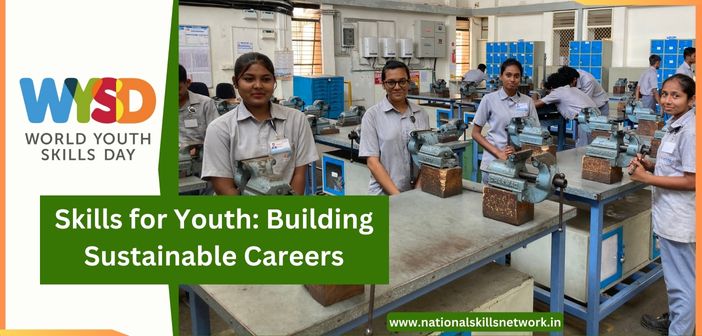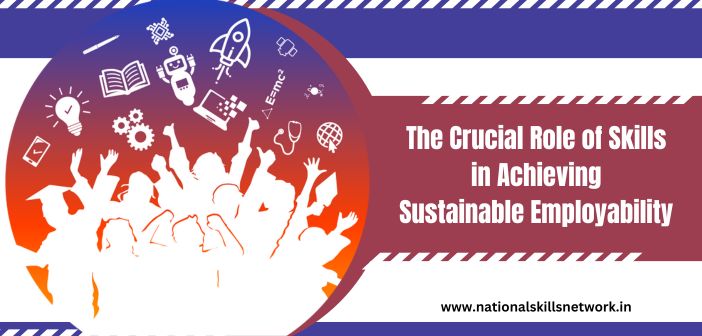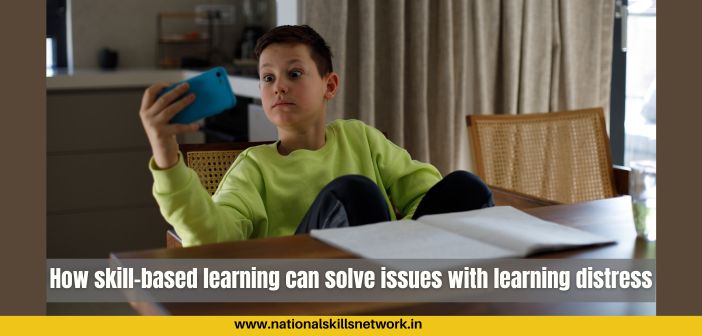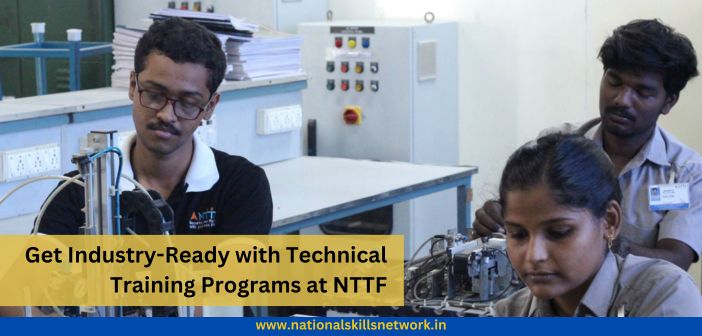India has seen a focused approach to vocational education through many organized initiatives in skill development. With an impetus from the Ministry for Skill Development and Entrepreneurship, we are moving towards consolidating our policy, planning and programs. In this Skill Talk, Pooja Gianchandani, German Chancellors Fellow, specializing in social and economic benefits of Vocational Education, conveys the urgent need to have a clear blueprint for the execution of these programs. Let’s read on to know more about Pooja’s project and her experience with various skilling initiatives in India.
 I have been closely involved with skills initiatives in India, working with all key stakeholders of the skills ecosystem – Government, Industry, Sector Skill Councils, Training Providers and Academia. Having observed vast amount of policy to practice work unfold, I have been awed by what has been achieved so far. However, despite the political will, private sector interest and demographic advantage, India continues to struggle to bridge the demand – supply gap. Experts have cited lack of integrated education and skills system and sustainable business models as two factors slowing the pace of the skil development in the country.
I have been closely involved with skills initiatives in India, working with all key stakeholders of the skills ecosystem – Government, Industry, Sector Skill Councils, Training Providers and Academia. Having observed vast amount of policy to practice work unfold, I have been awed by what has been achieved so far. However, despite the political will, private sector interest and demographic advantage, India continues to struggle to bridge the demand – supply gap. Experts have cited lack of integrated education and skills system and sustainable business models as two factors slowing the pace of the skil development in the country.
To look into this deeply and understand the merits of an integrated, industry led system, my research project is focused on studying – “Do Investments in Vocational Education and Training have long-term social and economic impact” – using the German Dual System of Training as a case. I am looking at evolving a cost – benefit analysis taking specific examples from the Construction, Automobile and Retail industry in Germany.
 Globally, skill development is perceived as a priority. Within European Union, for instance, there is huge focus on providing skills for employment. This is not restricted to political announcements – it moves beyond. There are specialized institutions that address all aspects of the skills value chain with collective inputs from all actors. For instance, my host, the Federal Institute for Vocational Education Research (BiBB) and its team of 800 + personnel is providing empirical and action research based policy inputs to its National and International partners.
Globally, skill development is perceived as a priority. Within European Union, for instance, there is huge focus on providing skills for employment. This is not restricted to political announcements – it moves beyond. There are specialized institutions that address all aspects of the skills value chain with collective inputs from all actors. For instance, my host, the Federal Institute for Vocational Education Research (BiBB) and its team of 800 + personnel is providing empirical and action research based policy inputs to its National and International partners.
To make skilling more structured and organised, we need to aggregate stakeholders and have goals derived from a common vision – how do we make most of the demographic advantage? We now have targets, systems and structures in place. We need these common goals and a shared objective. It has to be championed not only by the Government but equally by the Industry and internalized by all the stakeholders. We are growing much rapidly than these ageing economies. If we don’t get our act together, we are actually going to miss the ‘India as world talent pool’ and the demographic advantage. This makes investing in Skill India equally critical and crucial.
Skill development hinges on the 3 Is : Integration, Implementation and Intention
Though skills industry is evolving at a very fast pace, we have a long way to go in accomplishing our skilling goals. During the last few years, we’ve seen several efforts at restructuring and revamping this evolving system but it is largely top driven. Skill development initiatives are finely balanced on three pivots. These are: 1. Integration of government initiatives 2. Implementation by the industry 3. Intention of the learners . I call them the 3 I’s of our evolving skills industry. Much of this happens presently in isolation – policy announcement, Industry Centre’s of Excellence, mushrooming private Training Provider network, International Collaborations and so on.
 On the government front, the Ministry of Skill Development and Entrepreneurship (MSDE) has subsumed many bodies, which were running on parallel tracks, earlier. With increased integration within the Government system, the policy direction has become very clear. The pragmatic revision of the National Skills Policy which is widely endorsed by the industry, the approval of the Common Norms for government sponsored training schemes, setting of State Skills Mission (SSDM) with direct convergence with the national agenda are definitely moves in the positive direction.
On the government front, the Ministry of Skill Development and Entrepreneurship (MSDE) has subsumed many bodies, which were running on parallel tracks, earlier. With increased integration within the Government system, the policy direction has become very clear. The pragmatic revision of the National Skills Policy which is widely endorsed by the industry, the approval of the Common Norms for government sponsored training schemes, setting of State Skills Mission (SSDM) with direct convergence with the national agenda are definitely moves in the positive direction.
The other interesting part is the inclusion of entrepreneurship as a recognized skills development outcome. This has broadened the scope of skill development beyond a 75% job placement guarantee. Specialised bodies are overseeing skilling targets in terms of numbers of people skilled annually. Hopefully, this structure will reduce the duplication of work, clarity of role and create greater impact.
 Though the Industry has come forward to participate in the Skilling India mission, beyond addressing their limited manpower needs; we are far away from the European system where employees including apprentices are valued as assets. Even though the Industry led Sector Skill Councils are coordinating the job of role definitions in the form of Qualification Packs (QPs) and promoting curricular frameworks in compliance with NSQF, quality control of these first for the domestic needs and then for international markets is an investment and time intensive task. The Industry has to provide the SSCs– investments and inputs to develop the NOS and jobs to certified candidates for successful roll out of their standards.
Though the Industry has come forward to participate in the Skilling India mission, beyond addressing their limited manpower needs; we are far away from the European system where employees including apprentices are valued as assets. Even though the Industry led Sector Skill Councils are coordinating the job of role definitions in the form of Qualification Packs (QPs) and promoting curricular frameworks in compliance with NSQF, quality control of these first for the domestic needs and then for international markets is an investment and time intensive task. The Industry has to provide the SSCs– investments and inputs to develop the NOS and jobs to certified candidates for successful roll out of their standards.
 Learners have now started to look at alternate careers. Parents are aware that when the admission benchmarks are hovering near 95% marks higher education opportunities will shrink. They are both looking into avenues for entry into job market and skilling programs are a safe bet. However the charm of a degree over a diploma stays. Endorsements by the Prime Minister Mr. Narendra Modi himself, captains of industry and media initiatives of the MSDE and NSDC have given a facelift to vocational education and training, although it is yet to reach the level of being aspirational.
Learners have now started to look at alternate careers. Parents are aware that when the admission benchmarks are hovering near 95% marks higher education opportunities will shrink. They are both looking into avenues for entry into job market and skilling programs are a safe bet. However the charm of a degree over a diploma stays. Endorsements by the Prime Minister Mr. Narendra Modi himself, captains of industry and media initiatives of the MSDE and NSDC have given a facelift to vocational education and training, although it is yet to reach the level of being aspirational.
Connecting the dots in the evolving ecosystem
Despite all that is working in our favour and India moving towards a “Skills for All vision”, there are several gaps, one of them is skills not being a “for the people, by the people” agenda. Rhetorical as it may sound, this is one of the primary reasons of the success of many developed skills driven economies.
The German dual system of training is organized by the industry. 75% of the training cost is borne by them and the Government supports policy and social infrastructure. This is because the objective of skilling is embedded in their constitution. They have a clear and common objective of achieving highest standards of productivity and competitiveness. Training and apprenticeships therefore are the backbone of this approach. There are appropriate mechanisms which involve the MSMEs as well.
I have been part of many dialogues already led by the BiBB, iMove and their partner agencies in EU where the issues of engagement of industry have been widely discussed. The industry clearly looks at Apprenticeship as an investment not only towards acquiring a future qualified employee but also towards building the economy. The Skills planning process is based on evaluating the Return on Investments (ROI). This is part of the annual business planning processes of companies and is a norm across sectors.
Understandably, we have a large informal sector which is outside the policy net but there are specific lessons we can draw from these examples that can engage the MSMEs to take up this role more seriously. If we do a quick analysis, by 2022 our target is skills and jobs (for 75% of successfully trained trainees) for the approx. 300 million surplus manpower which will join the labour market. We want to create systems and mechanisms to train and absorb, if not more, approximately 15000 people each day! This seems an unachievable target in current scenario but accelerated job creation and training processes will definitely help.
Blueprint for implementation
I foresee the need for three key tradeoffs for preparing the blueprint:
- The top-heavy system needs to be balanced by integrating various other institutions and aligning their agenda to achieve our policy goals.
- Training has to be an industry-driven agenda because they create the demand. Education and training has to be seen as a continuum to promote skill based careers.
- Training has to shift from being a predominantly supply-side agenda to a demand-led system. Some of the quality providers bring in industry as a starting point for jobs, however the overall Industry engagement is far lesser than required.
Education and skills on the same continuum
When it comes to learners or the candidates who enrol for skill development courses, we need to give them a choice, make them feel empowered. They should be able to identify their interests and pursue them. The programs such as Skills at Schools and Colleges which are successfully creating a pool of #Skill Interested’ students have to be available all across the country.
Skilling is a multi-level, multi-party initiative. It is not a done in a day job. Unlike other labour-intensive economies we have our own strengths and limitations. However, we are still placed favourably. With the growing number of people who are migrating to other countries for jobs the international jobs market will become increasingly competitive. It is therefore, a now or never opportunity to re-fix our education and skills system so that the vision of becoming the ‘Skills Capital of the World’ can come alive.













How to make qualitative improvement in dual training system in India, specially in Maharashtra ?
Can you share your knowledge to improve the skill policy of Maharashtra ?
Can you send more details of dual training system being implemented in Germany ?
I want research in skill development .Can you help me ?